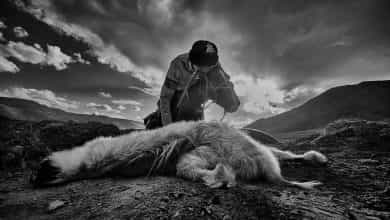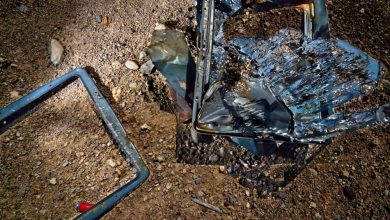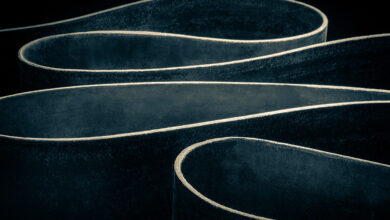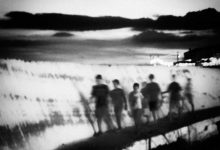Traveling from the industrial Lehigh Valley of Pennsylvania, through sparsely populated western New Jersey, and into the cacophony of New York City, Commuter Motions is a photography series that develops from the experiential capture of an eighty-mile commute.
By opposing the usual fixity of photography, the series attempts to capture the energy and movement of that commute using an almost Bergsonian approach, which through time-lapse, builds the images from segments of a continuous dynamic.
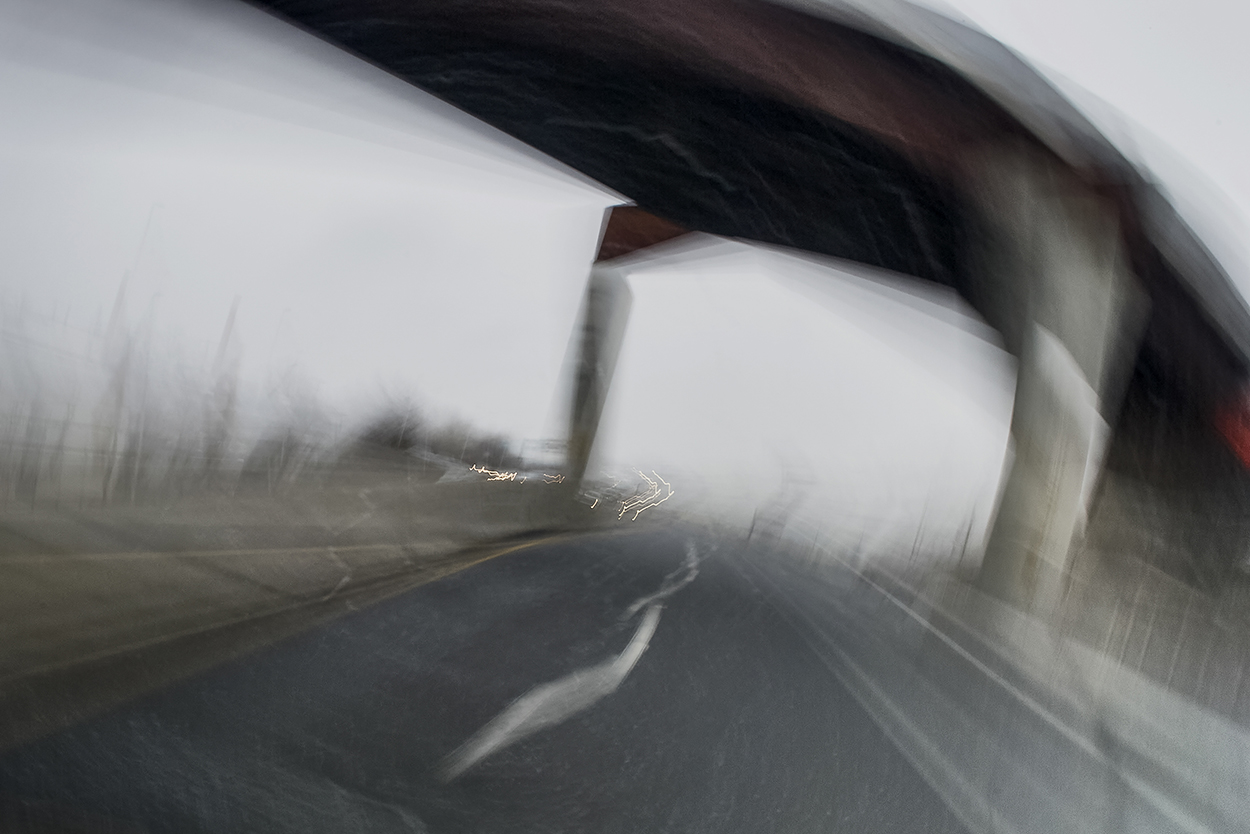
These photographs are not about the specificity of a “decisive moment” but are more in line with the thoughts and theories of late 19th and early 20th-century artists, who were immersed in the concepts of perpetuity, fleeting moments, change, chance and dynamism. Time surfaces as a fourth verity in addition to Robert Adam’s three: geography, biography, and metaphor, and it is that fourth verity which gives us not a moment, but a cross section of a continuum.
The typically narrow focus of our memory is substituted with an accumulation of peripheral visual memory, which creates images reflecting the gestalt of these movements, a gestalt which we perceive and experience but do not visually remember. Through this unusual form of capture, Commuter Motions frames the labyrinth of oscillating movements of our highways, bridges, and cities into photographs that reflect an élan vital of our daily commute.
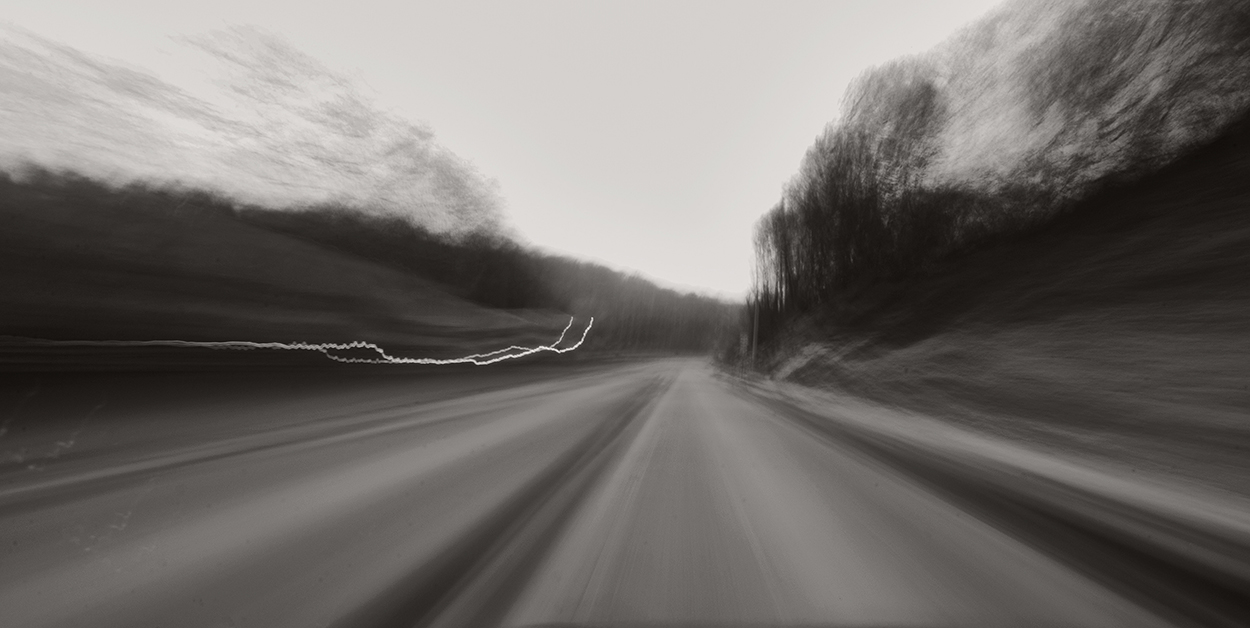
Central to this form of capture is a technique that uses a camera fixed inside a moving object or on a person, as opposed to moving the camera independently of the photographer. Whether the camera is held in place within a moving vehicle or manually held in a way to follow the photographer’s gaze or head movement, this fixed approach embodies the photographer’s intention. The process is not intended to fabricate effects, but to authentically capture and preserve an experience – in this case, a commute from Pennsylvania to New York.
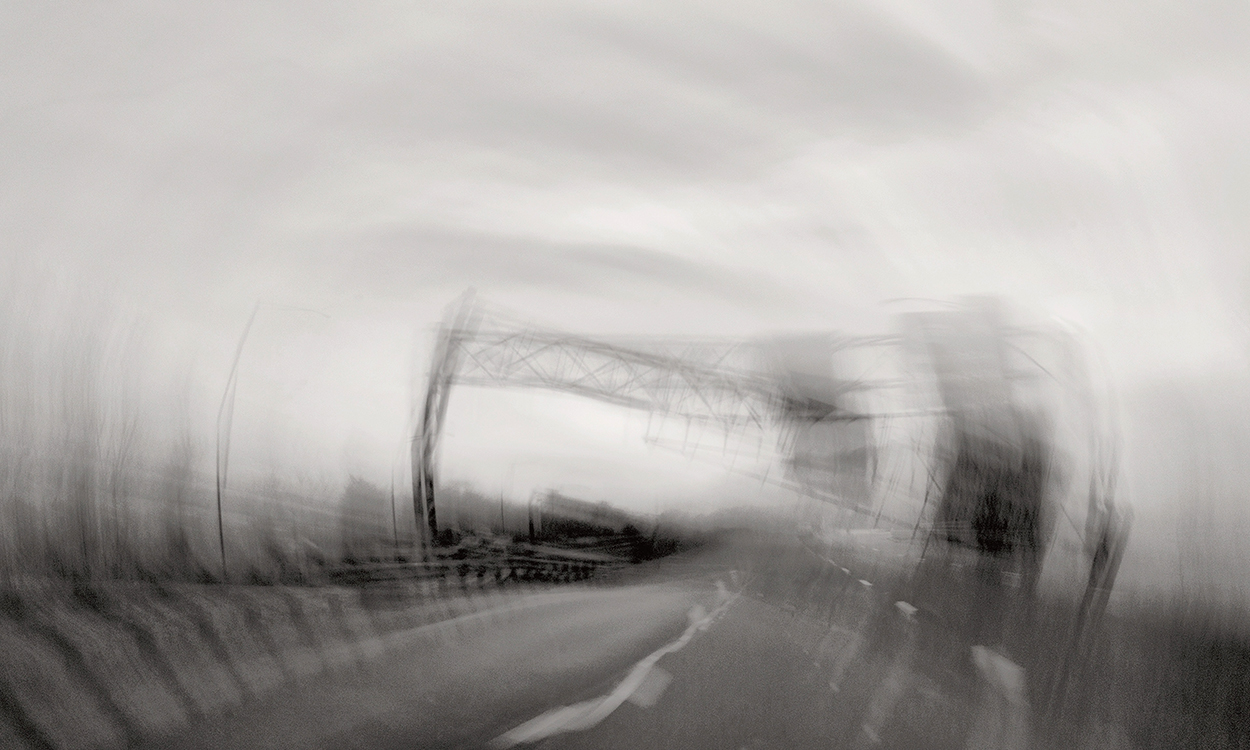
These methods record our peripheral vision, typically unnoticed by our conscious perception. Unlike deliberate compositional choices aimed at directing the viewer’s attention, these images reflect the natural, unfiltered dynamism and energy that envelop us on our commute. Fleeting glimpses of passing landscapes, powerful nodes of interaction, and subtle shifts in light and shadow animate the experience. These methods lie in sharp contrast to the approaches to Urban Landscape Photography over the last several decades.
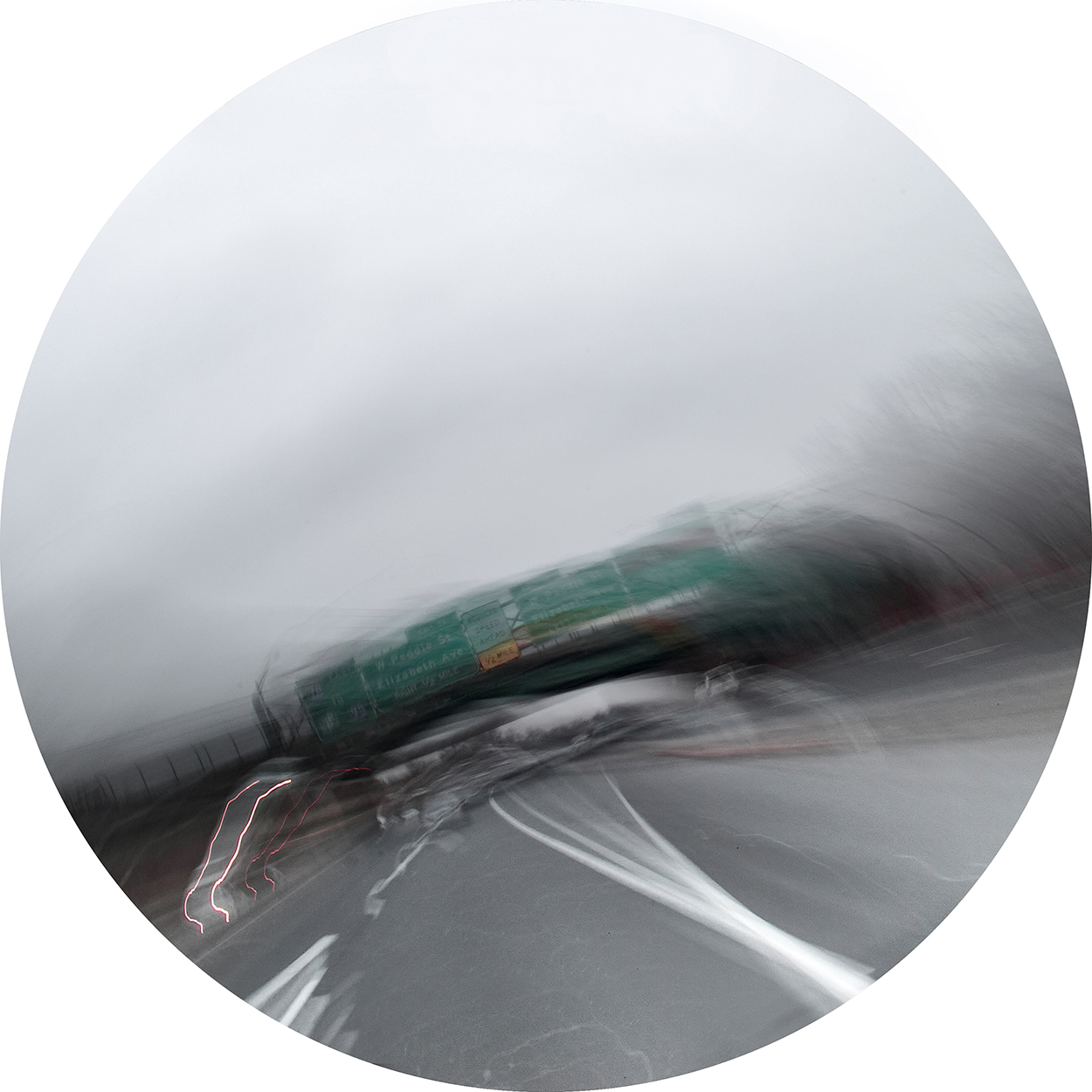
Since its groundbreaking introduction at the Eastman Museum in 1975, New Topographics has served as the aesthetic underpinnings this Urban Landscape genre. The series Commuter Motions stands in opposition to this elegant but neutral and anonymous style of straight photography, and instead traces its influence to the artistic and philosophical approaches of the aforementioned late 19th and early 20th-century. The Italian Futurists’ attempts at incorporating dynamism, speed, and movement into their work provide the most obvious analogy, while Impressionism also mirrors the some of the aims of this series in its attempt to move away from precise narrative toward the capture of transient light. In addition, Pictorial Photography, with its romantic soft focus and lack of specificity, pairs well with many images in the Commuter Motions series, as does the cacophony and expressive nature of the Modernist painters, such as John Marin.
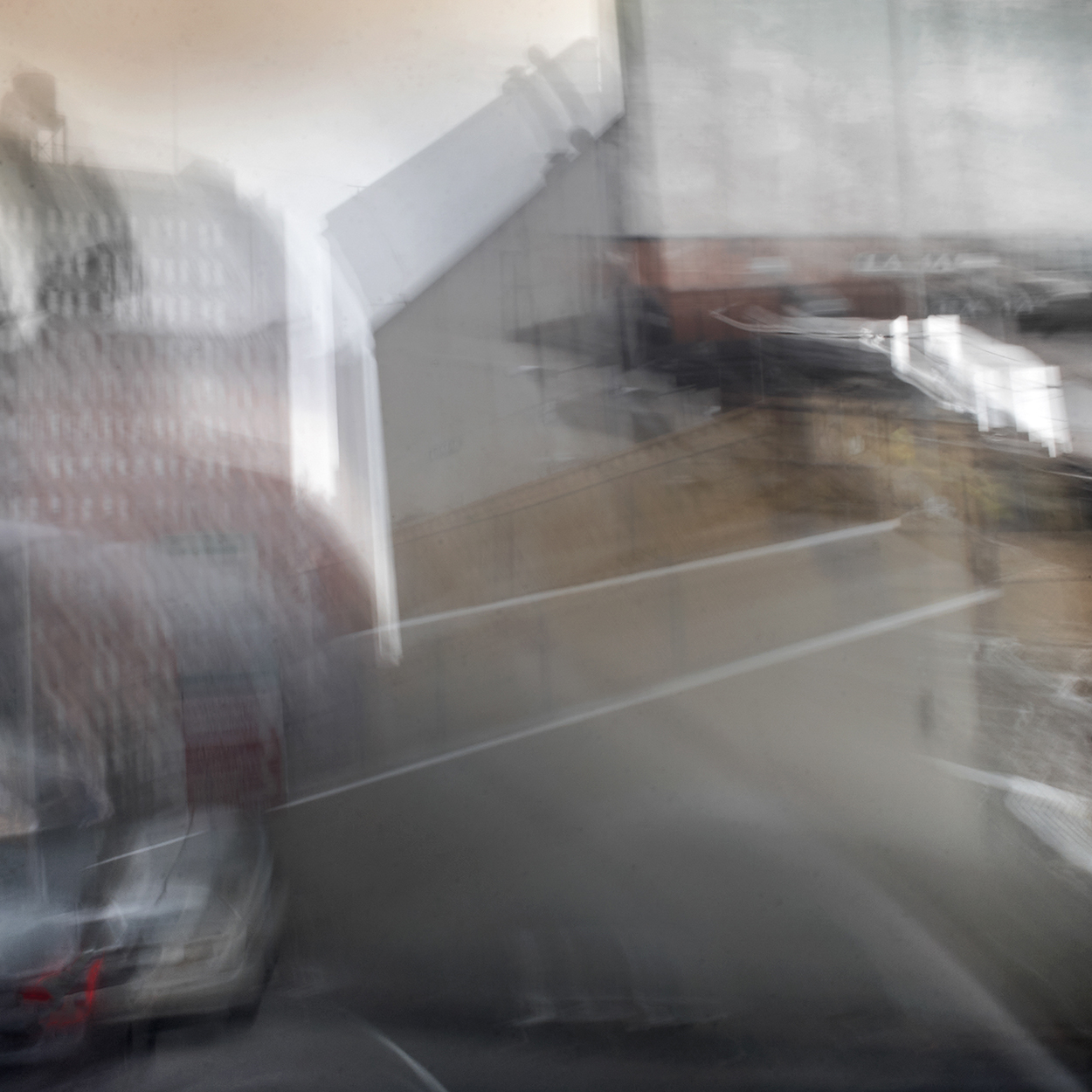
All these influences were commonly influenced themselves by the philosophical thinking of the time, which is best represented in the theories of Henri Bergson. At the heart of Bergson’s philosophy lies his concept of “duration” or “la durée,” which he contrasted with the scientific conception of time as a series of discrete, measurable moments. Bergson argued that true time is not a succession of static instants but rather a continuous flow, an indivisible whole in which past, present, and future coexist. All of these artistic approaches, including Commuter Motions, share a similar intent, reflecting Bergson’s concepts of the dynamic fluidity of time. And so, while this series can still be discussed using Robert Adam’s three verities, its structure lies in the capture of slices of a continuous movement, displaying that fourth verity of time.
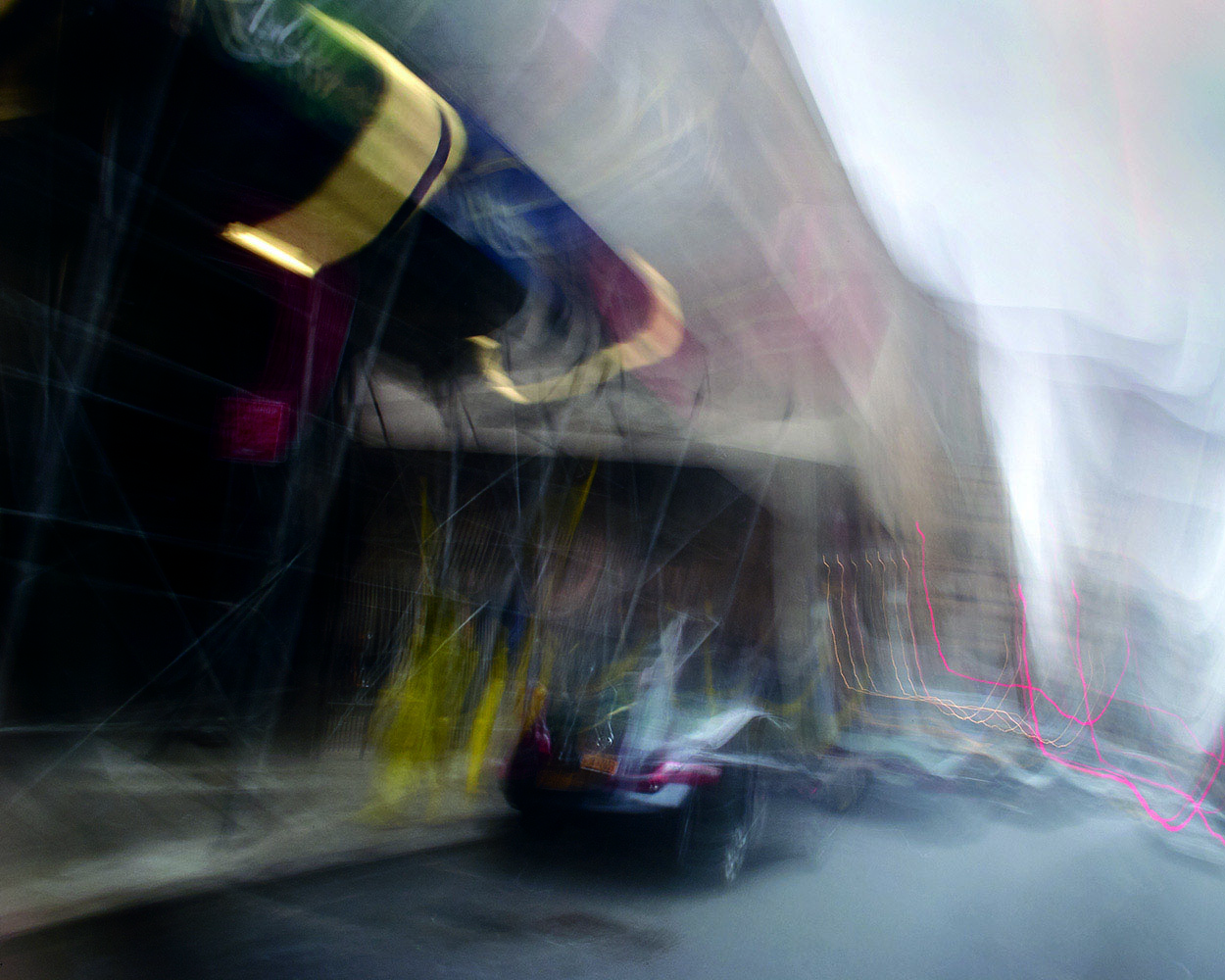
Commuter Motions is a series about the gestalt of place built from movement. It is an evocative and highly personal view capturing an energy that surrounds us by using techniques that confront the accepted methods of photography. Visual similarities with past forms of painting and photography arise not from an attempt to mimic or copy, but from a shared intent and discovery arrived at through disparate methods. This is a photographic series which attempts to frame the intangible spirit of our urban environment through the capture of a commute.
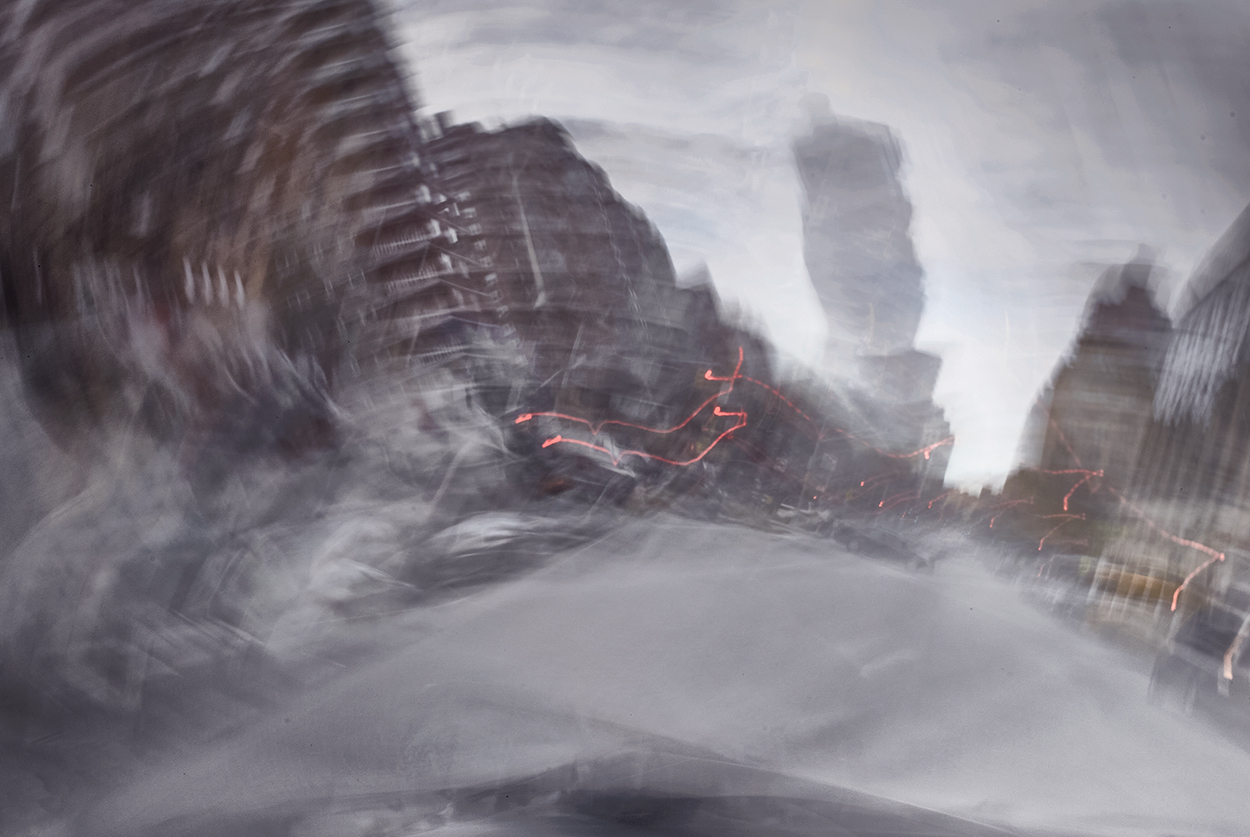
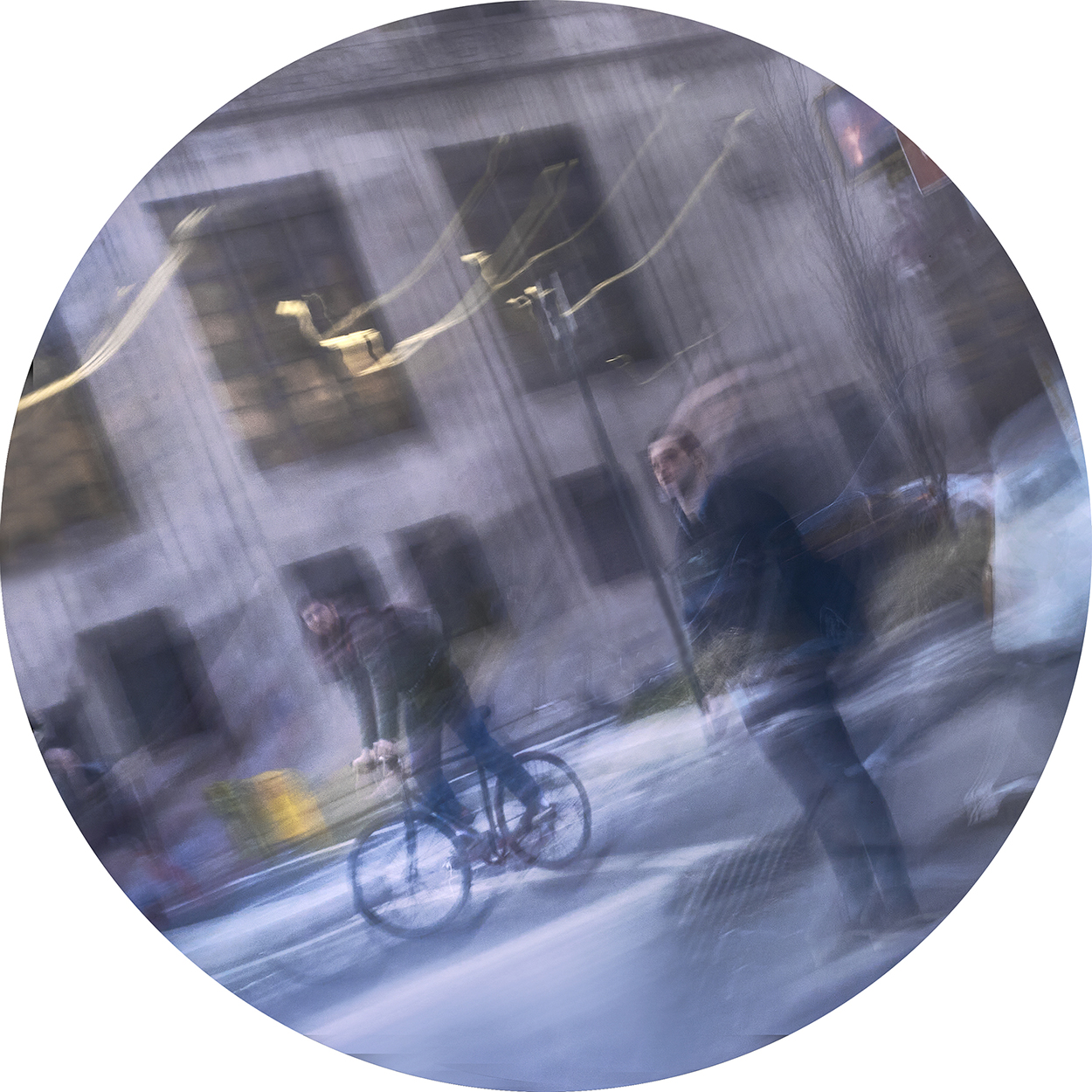
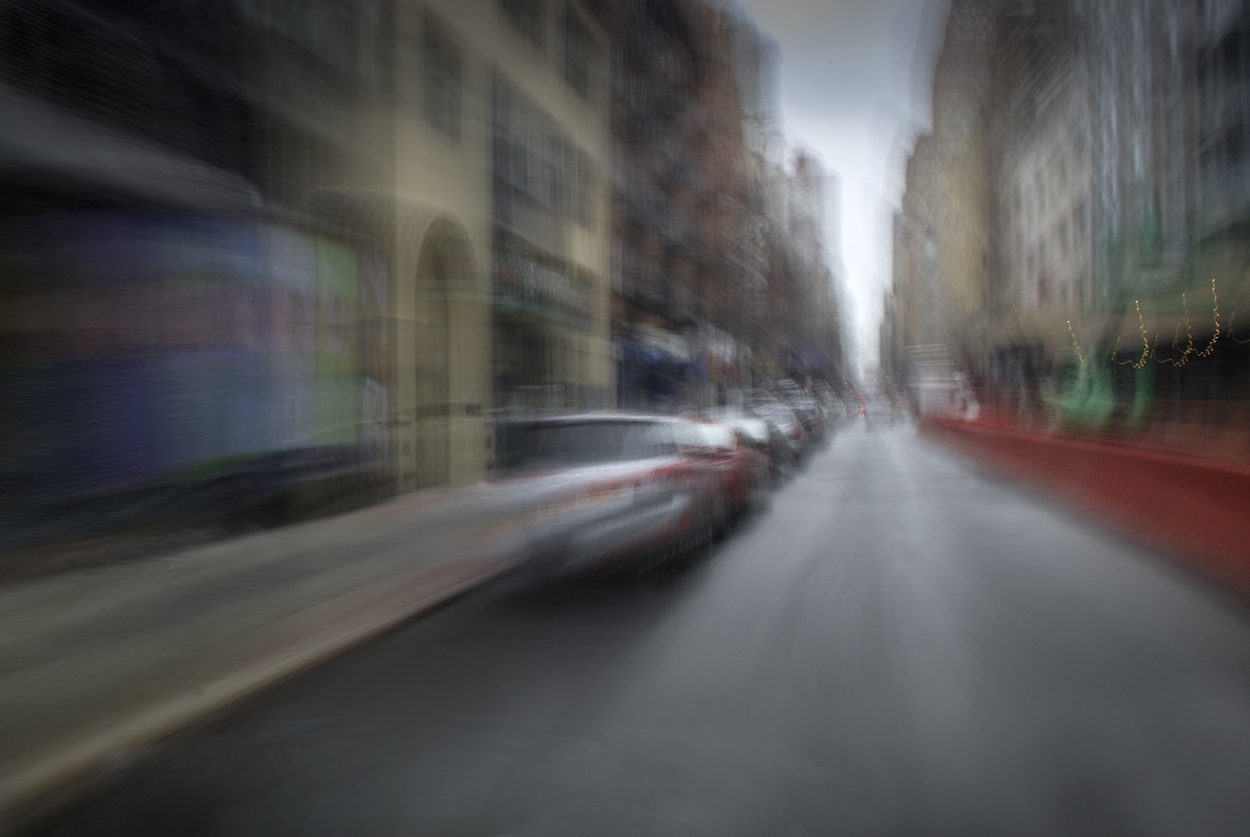
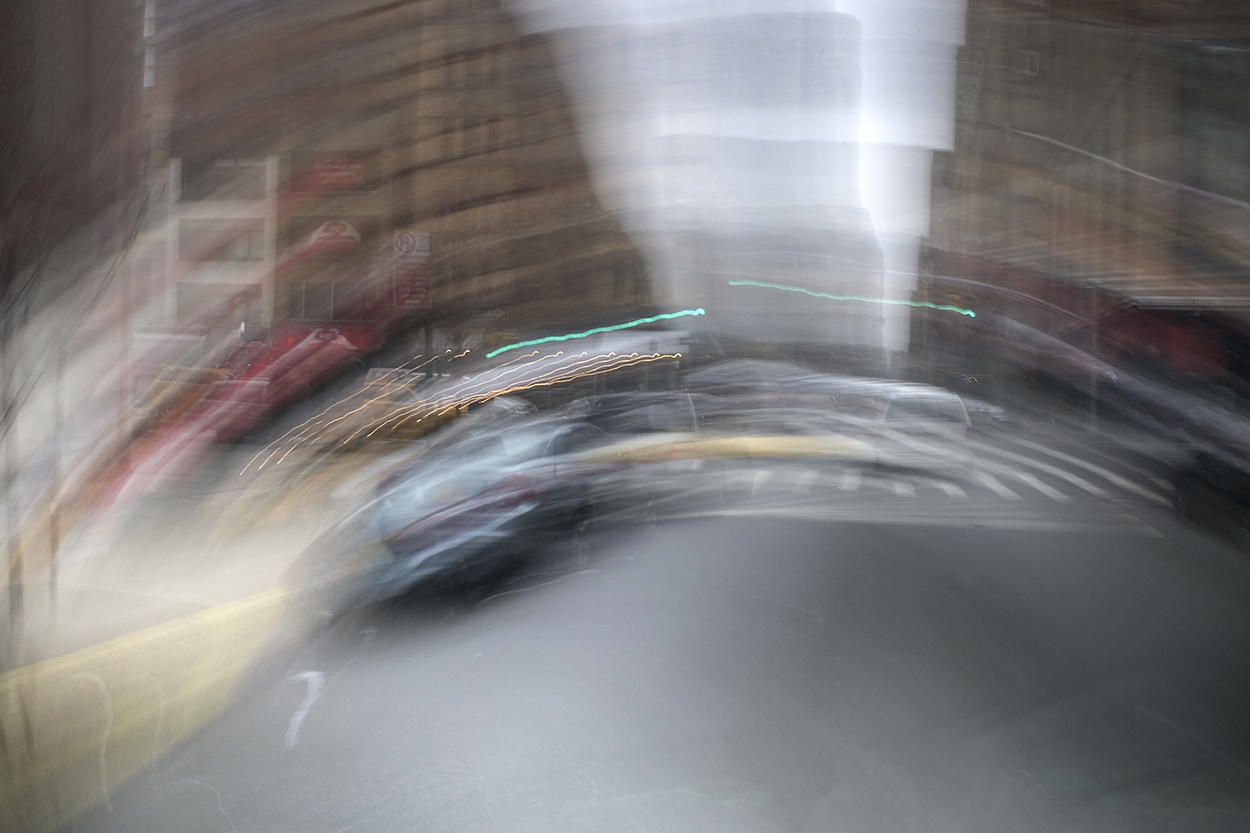
Commuter Motions is a 128 page book available in three formats, ebook, paperback and limited edition offset. The ebook can be bought on Apple Books, Google Books or several other sites, and the paperback is available on Barnes and Noble and Amazon.


